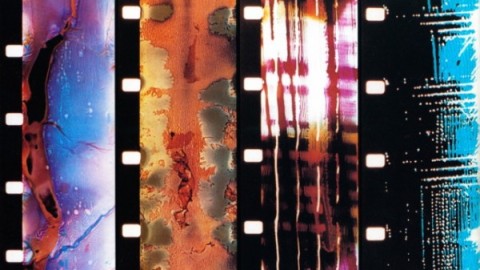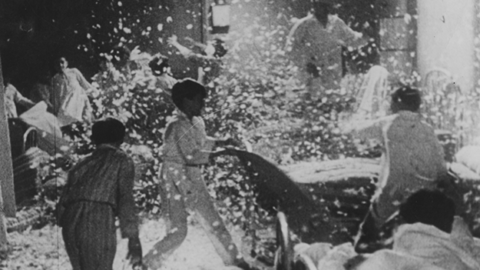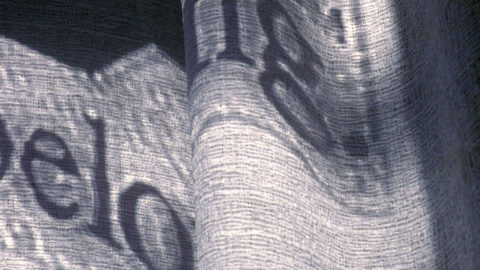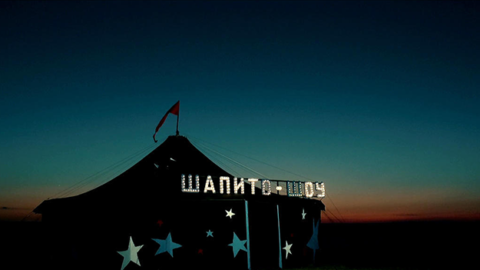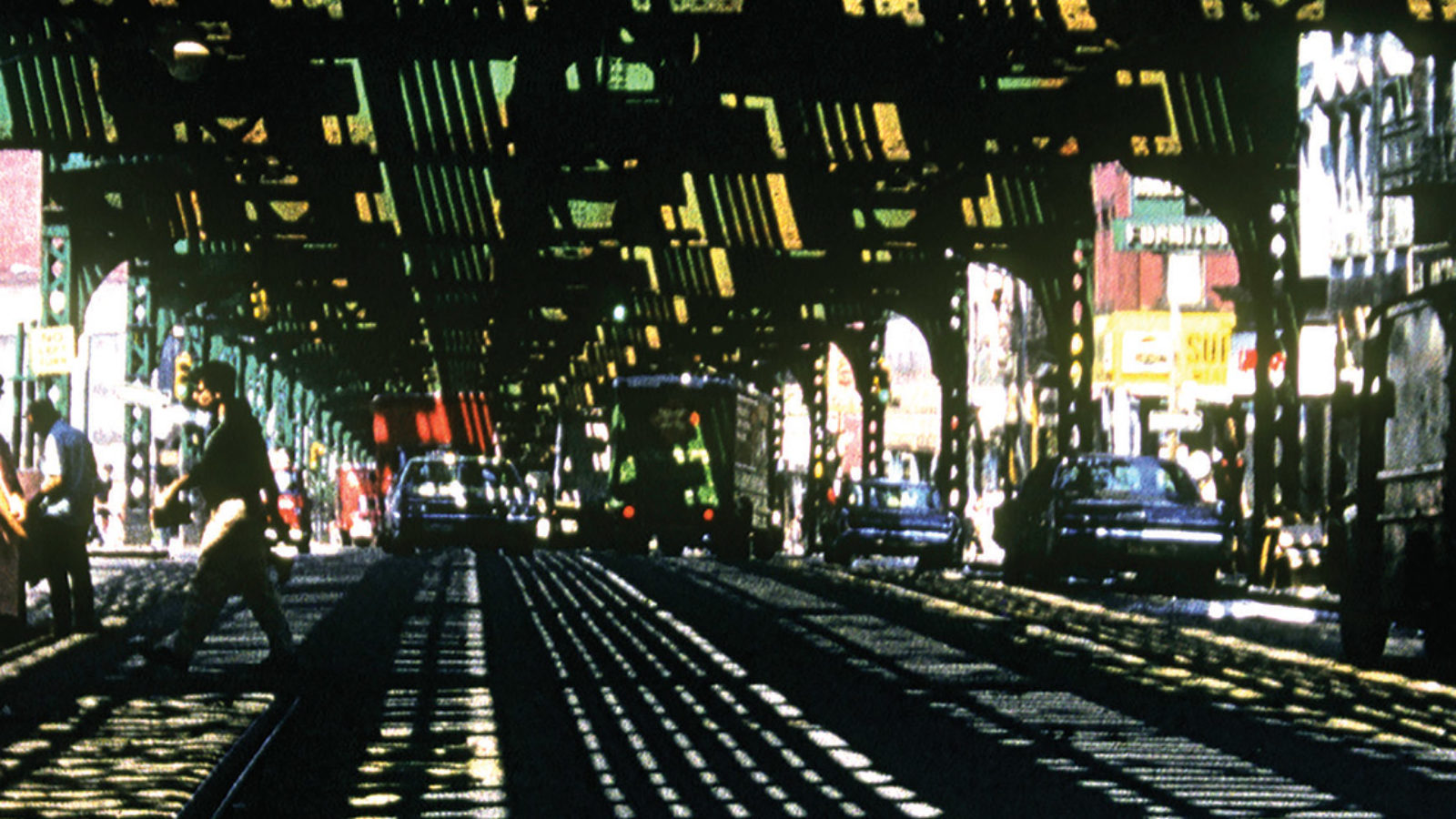
Heavenly Host
Nathaniel Dorsky has a tendency, during the talkbacks that often follow screenings of his short films, to answer a question with a second one: “What do you think?” “How did that shot seem to you?” Audience Q&As more often fit the description Dorsky used for bad conversation in his 2003 book Devotional Cinema—“an exhausting exchange of self-confirming, predigested concepts”—and his way of running them helps suggest what makes him such a distinctive, unorthodox filmmaker. Dorsky often compares his cinematic methods to the work of keeping up a conversation. Both involve the preservation of delicate equilibriums and the sustaining of carefully chosen tones. Both have the potential, as Dorsky wrote in the same passage, “to be balanced or unbalanced,” and both involve handling people with graciousness and care.
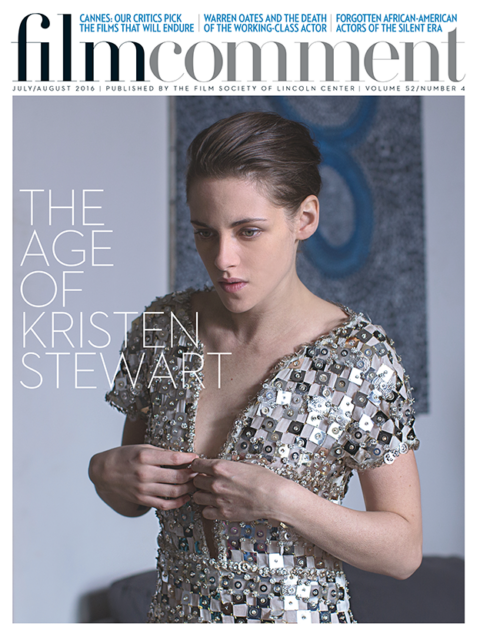
It’s always been one of Dorsky’s primary concerns as a filmmaker to “be a good host,” as he has put it. Across his works, no individual image can call attention to itself too loudly or recede too indistinctly into the whole. No excess of attention can be directed toward either the urban bustle of San Francisco, where Dorsky lives and works, or the city’s bucolic forests and wooded areas, where he often shoots. To watch nearly any Dorsky film is to be guided through a pattern of hushed, suspended, illuminated visions: light emerging through curtains and bending through glass; light deflected by the surfaces of tables and the bodies of cars; light caught by fabric; light distorted as it passes through water, windows, optical filters, or translucent rocks; light moving across faces, shoulders, and hair; light glittering across the surface of a receding tide; light striking jewels and strings of beads; moonlight muffled and darkened by clouds; sunlight fringing buds and shoots of grass. In their rhythms, textures, and distributions of light, these are unfailingly courteous films—experiments in how hospitable and accommodating moving images can be.
The nine 16mm films Dorsky made before he finished Triste (96) vary widely in format and style. The 23 films he’s released since are no less tonally diverse, but they have undeniable common ground. These later works are all silent; most hover around 20 minutes in length. (At the outskirts are Arbor Vitae, made between 1999 and 2000, at 28 minutes, and 2010’s Aubade, at just under 12.) They all move at 18 frames per second, which Dorsky has variably called “silent speed” and “sacred speed.” Certain subjects catch Dorsky’s eye repeatedly in the films he’s made since Triste: transparent, reflective surfaces like windows or glass doors; bodies of freshwater; storefront displays; meadows in bloom; café patrons, commuters, and people in the street; amateur sports games; cats; tree branches; cloud formations; birds. Sometimes, he’ll introduce a radically foreign object into his films: a buttressed, torchlit temple pool in Spring (13); a pod-like room that resembles the interior of a space shuttle in Pastourelle (10). And yet even when he returns to a familiar image, Dorsky never films anything exactly the same way twice. A shot in Variations (92-98) of the moon emerging from behind a layer of cloud carries a radically different tonal charge than does a much tighter shot of the same subject in The Visitation (02), in which the moon’s emergence registers less as a softening, consoling presence than as a threatening omen. Both suggest different states of mind than the shot midway through Threnody (04) of the moon reflected in a storefront window over a mannequin’s shrouded eye, or the shots of moonlit clouds that pile on one another breathlessly in the last seconds of Compline (09). When the moon appears in Summer (13), it’s sheathed in clouds that fly across the screen in time-lapse; when it enters Hours for Jerome (66-70/82), one of his earliest,it’s as a flickering, latticed orb that looks at first glance like a patch of light seen through a circular viewfinder.
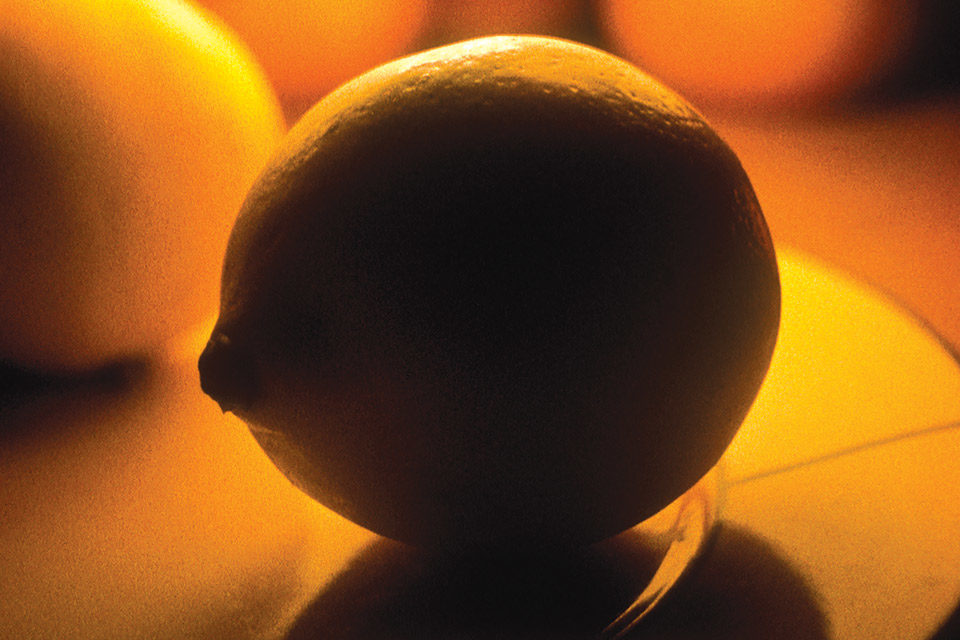
Variations
Each of Dorsky’s shots can be taken as a reaction against the one before it. Overpowering images like the vision of the receding tide near the end of The Visitation or the virtuosic first shot of Song (13), in which a reflected frame-within-the-frame literally flies into full view at the closing of a door, have to be buffered by humbler shots of people, animals, or plants, or by murkier, blurrier shots that make fewer demands on the eye. The concluding sequence of Song and Solitude (05-06), for instance, shows a low-contrast image of a cat gazing out of a window; a vertiginous close-up of a preening mannequin in a boutique display lit by shimmering green reflections; a casual glimpse of birds pecking at an unfinished lunch; a dim image of tree branches swaying against a dusk sky; and a flurry of quick, high-exposure shots of white almond blossoms quivering in the wind. One imagines Dorsky deciding that the image of the mannequin and the subsequent volley of shots needed to be separated by an image less lofty and ethereal (the hungry birds), and then cushioned by a more neutral shot on which the eye could rest (the branches). Dorsky has referred to cuts as “refreshments of receptivity.” Watch enough of his films, and it’s easy to lose your tolerance for movies that treat their viewers’ receptivity as an inexhaustible resource—films that bully, rant, aggress, or lapse into monologue.
Born in 1943, Dorsky made his first films in Millburn, the New Jersey town where he grew up. As a 21-year-old, recently out gay man, he left Antioch College after a year to live in New York and take classes at NYU’s film school. Photos of Dorsky as a teenager show him already wearing light meters and visiting camera shops, and when he moved to the city he immersed himself in its thriving underground film scene. Slavko Vorkapich was giving a series of influential lectures at MoMA; Stan Brakhage was presenting Dog Star Man volume by volume; Gregory Markopoulos, Jack Smith, and George Kuchar were premiering films that toyed mischievously with their viewers’ expectations about aesthetics and sexuality.
It was under these influences that Dorsky made his first three films between 1964 and 1965. The images he took on his visits to Millburn—football games, flags hung in yards, old men playing badminton at an afternoon picnic—seemed to come from the perspective of a lost visitor or a wandering ghost. Like Dorsky’s later movies, Ingreen and A Fall Trip Home (both 64) are rich with shots of windswept flowers and grass, discreetly sensual images of the male body, and scenes of quotidian human activity captured from a muffling remove. What Dorsky would most radically disavow after making these films were their ominous sound- tracks and their overt psychologizing. These were films explicitly about what it was like to grow up gay in an inhospitable place (one shot in Ingreen shows a young man falling at the knees of a menacing father figure in the middle of a field), and Dorsky wasn’t well suited to their confessional mode. By the time he made Summerwind (65), he was leaving his own psychological states unstated, letting them come through in the rhythm and tone of the images themselves.
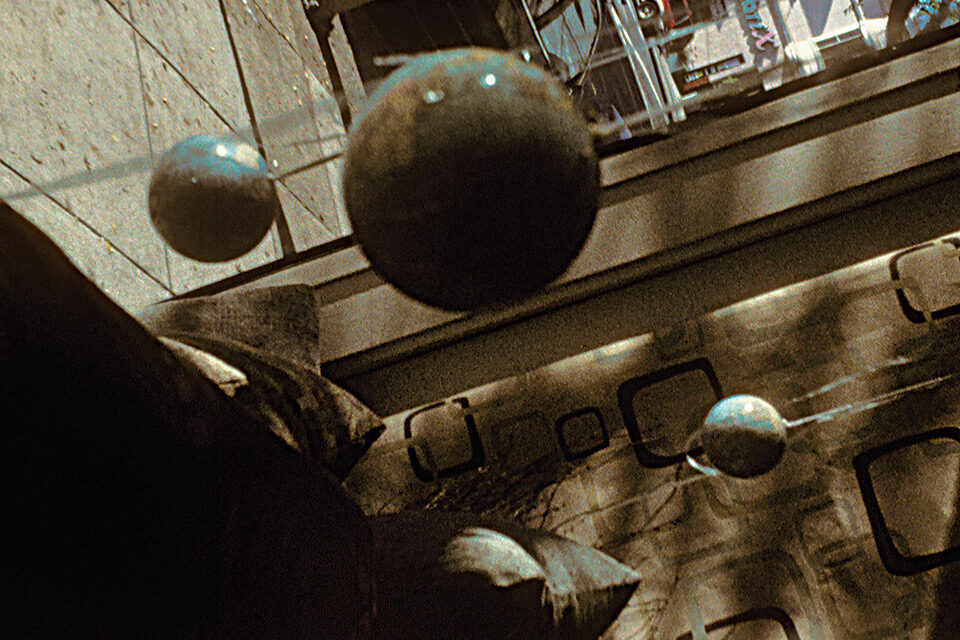
Sarabande
The day after Ingreen premiered at the Washington Square Gallery, Markopoulos’s younger roommate, Jerome Hiler, met Dorsky at the offices of the Film-makers’ Co-op. Hiler and Dorsky became fast friends, then romantic partners and close artistic collaborators. By 1967, the two of them were living together in a small cottage off New Jersey’s Lake Owassa. Four years later, they left New York for San Francisco, where they soon settled permanently after an unhappy stay in L.A. to help write, shoot, and produce an exploitation film called Revenge of the Cheerleaders. Dorsky found more commercial editing jobs akin to the work he’d done in New York and started collecting bargain-priced, outdated film stocks.
One evening in 1978, he stumbled upon his decade-old footage from New York and Lake Owassa. He spent the next four years stitching the half-edited fragments into Hours for Jerome (82), a 45-minute film split into two parts and four seasonal movements. In the movie’s first minutes, a sliver of sunlight glimpsed through a forest canopy slowly widens until it nearly fills the screen, and there’s an impression throughout the film of long-suppressed memories and associations surging into clarity: images of the frayed hem of Hiler’s jeans rustling as his hands move across his shoes; glimpses of strangers fixing dinner in brightly lit apartments; records of rainy commutes. With the distance of 10 years, Dorsky could weave the original film’s more violent passages—several scenes of New York passersby are punctuated with full-screen flashes of aggressive, zigzagging lines—into a pattern that also includes affectionate portraits of strangers and friends, tender interludes, and mischievous juxtapositions.
He wouldn’t make another such film for 14 years. Instead, for the rest of the ’80s, he put himself through a rigorous set of exercises to acquaint himself with the film stocks—Gevaert, Ilford, Dynachrome—he’d accumulated. Pneuma (77-83) was assembled by hand on an optical printer from irregular scraps of outdated color reversal stock. Each image is an expanse of a single dominant color strewn with enlarged film grains that pinwheel in place and cascade across the screen, not unlike the grains of sand that run down inclines or collapse en masse in extreme close-up throughout Alaya (76-87), which Dorsky made during this period in Death Valley and Cape Cod.
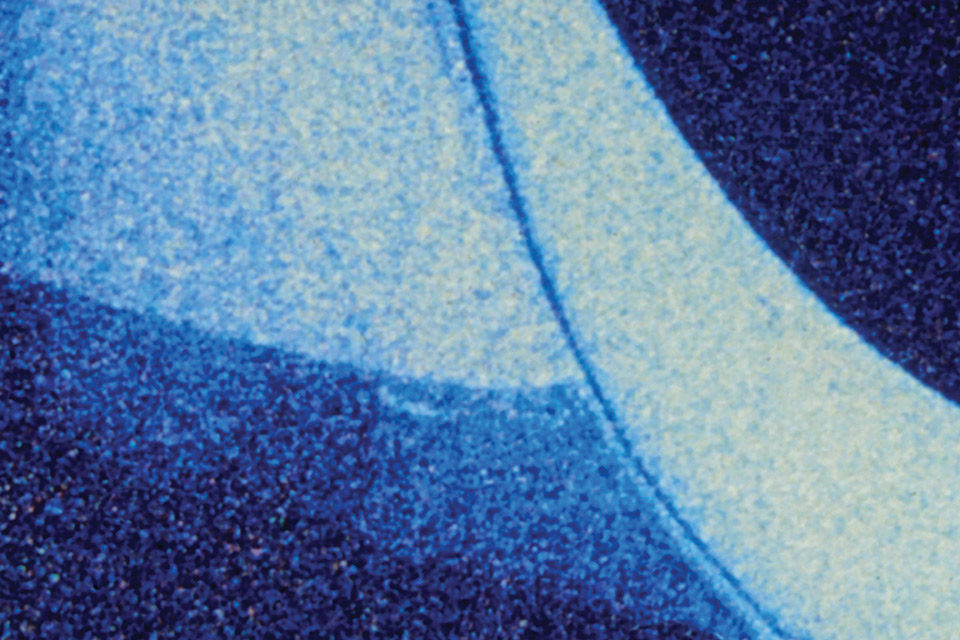
Pneuma
In 17 Reasons Why (85-87), Dorsky took more liberties with the materials he’d been studying. He created it with Regular 8mm, a rarely used double-strip format usually split down the middle in processing. When Dorsky asked that the film go unsplit, the resulting strip showed up projected as a string of four-chambered images—two parallel strands of two frames each. The images on each of those frames—rivers, lilies, parade floats, stained and blown glass—would recur in Dorsky’s later works, but the tempo at which they move here is unusually quick and frenetic. Watching the film, you only take a breath at the last shot: a cluster of trees swaying at dusk.
As he made these movies, Dorsky was accumulating the footage that would become Triste. He edited it on the assumption that a movie’s images had to be carefully balanced, arranged in keeping with their density, color, texture, and weight. The shots in Triste range from the reverent (hundreds of leaves rustling together against a chapel wall) to the casual (Hiler preparing a meal in the couple’s shared kitchen), the precious (an infant’s face speckled with refracted sunlight) to the ponderous (another tree branch swaying in the wind after dusk). As they accumulate, every shot gives what it can—its ballasting heaviness, its loosening intimacy, its disruptive violence, its diverting levity, its startling virtuosity—to the creation of a melody that develops and deepens over the course of the film. Triste showed Dorsky trying to purge himself of any remnants of self-consciousness, posturing, or artifice. For its showy, black-and-white passages, Dorsky once wryly called it “my last avant-garde film.”
“When I first encountered avant-garde films in the early 1960s,” Dorsky wrote near the start of Devotional Cinema, “I began to observe that there was a concordance between film and our human metabolism, and to see that this concordance was a fertile ground for expression, a basis for exploring a language intrinsic to film.” Dorsky’s writings can be cryptic, but the “concordance” they describe is such a basic fact of moviegoing it often goes unmentioned—that certain arrangements of images jerk their viewers rudely around whereas others seem to synchronize harmoniously with their viewers’ internal rhythms. Dorsky’s editing is a matter of hitting on the timings that will seem most accommodating and least interruptive to an actual, embodied, exhaustible person. His cuts are based on what audiences will best be able to process, just as his choice of what to shoot depends in part on what a given set of physical film materials will best capture. The relatively abstract Sarabande (08) and Compline abound in deep purples and blues, linger on sparkling patterns of light, and depend on fine gradations of shadow because Dorsky wanted, with the last of his discontinued Kodachrome, to show what only that stock could do. In more recent films like February and Avraham (both 14), Dorsky relied increasingly on flickering effects and sudden aperture changes because the color negative stock with which he works now is thinner and less expressive (“wimpier,” as he has put it) than Kodachrome, but handles extreme brightness and darkness well.
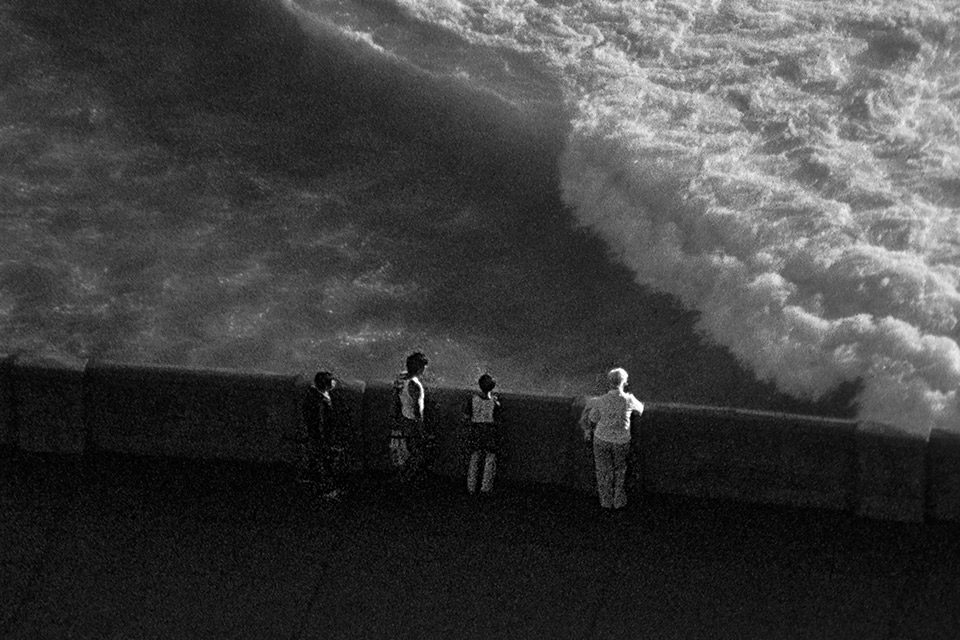
Triste
Since Triste, Dorsky has been steadily isolating certain of his habits and moods and magnifying them to the exclusion of other ones, often in response to specific events. Song and Solitude was made in tribute to Dorsky’s friend Susan Vigil, who was undergoing cancer treatments during the period when Dorsky showed her the film’s weekly rushes. Threnody was made shortly after the death of Stan Brakhage, a deep influence for Dorsky and a close friend; August and After in memory of George Kuchar and Carla Liss; The Visitation over the course of a week in Toronto immediately after 9/11. These are some of Dorsky’s most somber films. He made Variations, Arbor Vitae, and Love’s Refrain (00-01), three of his brightest and most buoyant, as he was recovering from a severe concussion and, as he has put it, rediscovering the world.
For all their variations in mood, these films share an unmistakable orientation to the worlds they depict. Dorsky always keeps a more or less wide buffer zone between his camera and his subjects. In The Return (11), a shot of two women in a café cuts off the top of their heads, leaving only their eagerly gesticulating bodies; in a number of the shots of San Francisco pedestrians that fill Song, it’s only revealed midway through that we’re looking at the people in question through a window, a door, or a screen. In one post-screening discussion, Dorsky described these nonintrusive points of view as the ones with enough “nobility and dignity” to “allow the audience to have the same relationship to the screen that I’m having to the camera.” If the filmmaker did too much, if he seemed like a purposeful agent rather than a passive floating consciousness, he would break whatever immersion the audience has in the world of the screen. Viewers would sense his fiddling, manipulative presence behind the images; “the hand of the filmmaker,” in a phrase Dorsky often uses, would have broken in.
One might reply that viewers are made of hardier stuff than such phrases suggest, and that we sometimes don’t mind a filmmaker’s hand breaking into a movie and pushing us around. But if Dorsky’s concern for his viewers makes him unusually cautious, he still finds ways to startle and surprise. One of his regular moves is to usher his viewers into sudden, direct involvement with other people—the image in Love’s Refrain of a hairless, bedridden elderly man gazing into the camera with a faint grin; the frankly erotic passage in The Visitation of a woman splashing water over her nude torso; the succession of shadowy close-up portraits midway through Intimations (15)—or into moments of quiet domestic intimacy with Hiler, who appears across these films like a watchful, benevolent presence.
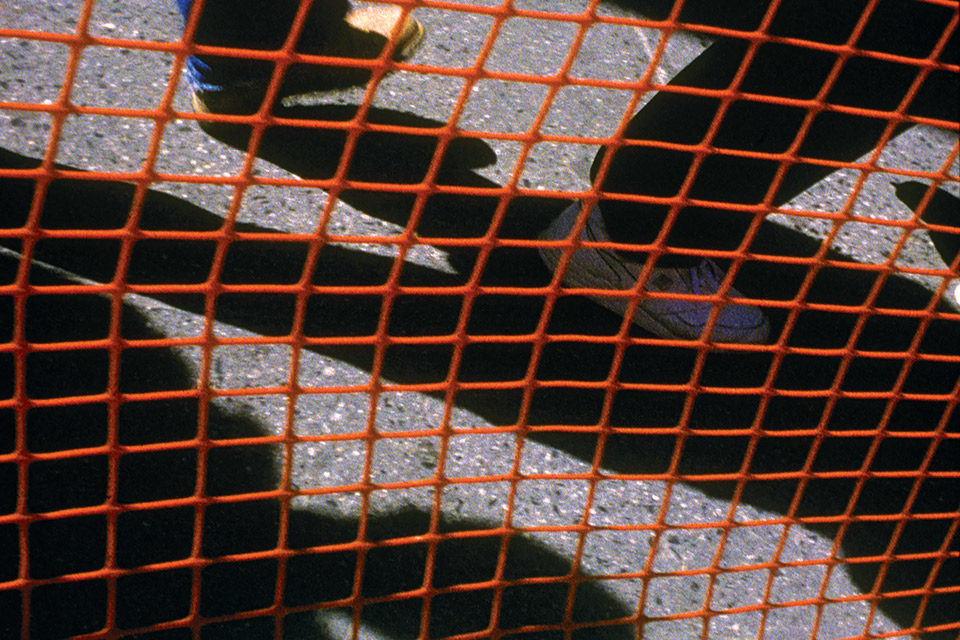
Love's Refrain
Dorsky’s most recent films are among his loosest and most casual. The aperture adjustments and blurrings of focus Dorsky once left in the cutting room have become some of his central expressive tools. When he captures a cluster of cherry blossoms in February, an overcast night sky in Avraham, or a blood-red flower in Prelude (15), he keeps brightening and dimming the shot, playing at letting in more and less light, like a pianist alternating quickly between two notes. In Dorsky’s films from the early 2000s, everything in the shot tended to be crisp, glistening, and focused; recently, he’s started letting fuzzy, ill-defined objects sway in the extreme foreground of his shots or glitter suggestively in the far background. It’s as if he has become more comfortable calling attention to the methods behind his films’ dazzling displays—exposing the whimsical tweaks and tunings on which he’s always relied to achieve his effects.
This is a welcome development. Dorsky’s impulse to anticipate his viewers’ needs—to palliate, minister to, heal, and relax his audience—has always pushed him to suppress indulgent habits and make tighter, more potent movies. But it has also sometimes limited his freedom of movement and made him unwilling to risk sudden, unexpected gestures that might tear the fabric of the viewer’s experience. That he now seems less worried about “breaking in” to the movie or showing his hand as a filmmaker has made his works not less immersive but friendlier and more inviting. He’s become so palpably relaxed with his materials and so accomplished at subtly manipulating light and color that his movies have shed their last elements of self-consciousness or strain.
The first half of his new film, Autumn, surveys much of what Dorsky has made in the past two decades. Its first minute—a gauzy dance of pearly, pale yellows and pinks—recalls the similarly abstract beginning of Triste. The shots of fall foliage that follow, with their aperture adjustments and unfocused foregrounds, could have come from Prelude or Avraham, and the subsequent, playful shots of department-store displays and streets in San Francisco’s Chinatown wouldn’t have seemed out of place in Song and Solitude. Then, after about 15 minutes, we are ushered somewhere else—into an almost wholly abstract space of light leaks and lens flares, magnified water droplets and narrow threads of blue light, color formations that look like patterned doilies passing in and out of alignment, and jewel-like floating octagons of bright green, red, and gold.
The movie ends on two familiar, reassuring shots of a cluster of red flowers, but we’re left marveling at what the previous 10 minutes showed. Where did these images come from? How did Dorsky capture them? What are they of? With this passage, Dorsky has led us into new and disorienting territory. Watching it makes you think that his trust in his viewers—their tolerance for abstraction and mystery and surprise—has deepened over the years, that the conversation in which his films are installments has come to a riper and more intimate stage. Dorsky has always acted the part of the gracious host, but the drama of his new films is in seeing him become less formal in his invitations, less worried over the impression he gives, and rightly confident that we’ll want to keep revisiting his house of images no matter how dense or unfamiliar they become.
IN FOCUS: Nathaniel Dorsky’s latest short film, Autumn, will premiere in the fall.
Max Nelson is an editorial assistant at The New York Review of Books and writes the Restoration Row column for FILM COMMENT.



